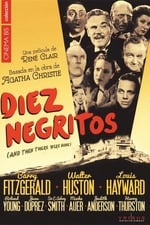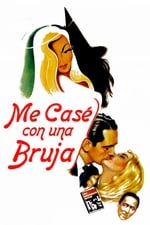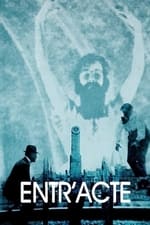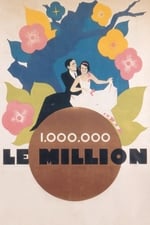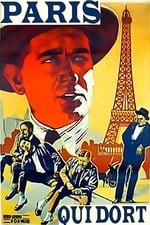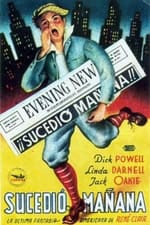Información personal
Conocido por Dirección
Créditos conocidos 45
Sexo Masculino
Fecha de nacimiento 11 de noviembre de 1898
Fecha de defunción 15 de marzo de 1981 (82 años)
Lugar de nacimiento Paris, France
También conocido como
- Rene Clair
- René Chomette
- René Després
- Danceny
- Рене Клер
Puntuación del contenido
63
Estamos muy cerca.
Iniciar sesión para informar de un problema
Biografía
René Clair was a French filmmaker and writer. He first established his reputation in the 1920s as a director of silent films in which comedy was often mingled with fantasy. He went on to make some of the most innovative early sound films in France, before going abroad to work in the UK and USA for more than a decade. Returning to France after World War II, he continued to make films that were characterised by their elegance and wit, often presenting a nostalgic view of French life in earlier years. He was elected to the Académie française in 1960. Clair's best known films include The Italian Straw Hat (1928), Under the Roofs of Paris (1930), Le Million (1931), À nous la liberté (1931), I Married a Witch (1942), and And Then There Were None (1945).
In 1924, while Clair was working on Ciné-sketch for the theatre with France Picabia, he first met a young actress, Bronja Perlmutter, who subsequently appeared in his film Le Voyage imaginaire (1926) premiered at the newly opened Studio des Ursulines. They married in 1926, and their son, Jean-François, was born in 1927.
René Clair died at home on 15 March 1981, and he was buried privately at Saint-Germain-l'Auxerrois.
Clair's reputation as a film-maker underwent a considerable reevaluation during the course of his own lifetime: in the 1930s he was widely seen as one of France's greatest directors, alongside Renoir and Carné, but thereafter his work's artifice and detachment from the realities of life fell increasingly from favour. The avant-gardism of his first films, and especially Entr'acte, had given him a temporary notoriety, and a grounding in surrealism continued to underlie much of his comedy work. It was however the imaginative manner in which he overcame his initial scepticism about the arrival of sound which established his originality, and his first four sound films brought him international fame.
Clair's years of working in the UK and USA made him still more widely known but did not show any marked development in his style or thematic concerns. It was in the post-war films that he made on his return to France that some critics have observed a new maturity and emotional depth, accompanied by a prevailing sense of melancholy but still framed by the elegance and wit that characterised his earlier work.
However, in the 1950s the critics who heralded the arrival of the French New Wave, especially those associated with Cahiers du Cinéma, found Clair's work old-fashioned and academic. The paradox of Clair's reputation has been further heightened by those commentators who have seen François Truffaut as the French cinema's true successor to Clair, notwithstanding the occasions of their mutual disdain.
René Clair was a French filmmaker and writer. He first established his reputation in the 1920s as a director of silent films in which comedy was often mingled with fantasy. He went on to make some of the most innovative early sound films in France, before going abroad to work in the UK and USA for more than a decade. Returning to France after World War II, he continued to make films that were characterised by their elegance and wit, often presenting a nostalgic view of French life in earlier years. He was elected to the Académie française in 1960. Clair's best known films include The Italian Straw Hat (1928), Under the Roofs of Paris (1930), Le Million (1931), À nous la liberté (1931), I Married a Witch (1942), and And Then There Were None (1945).
In 1924, while Clair was working on Ciné-sketch for the theatre with France Picabia, he first met a young actress, Bronja Perlmutter, who subsequently appeared in his film Le Voyage imaginaire (1926) premiered at the newly opened Studio des Ursulines. They married in 1926, and their son, Jean-François, was born in 1927.
René Clair died at home on 15 March 1981, and he was buried privately at Saint-Germain-l'Auxerrois.
Clair's reputation as a film-maker underwent a considerable reevaluation during the course of his own lifetime: in the 1930s he was widely seen as one of France's greatest directors, alongside Renoir and Carné, but thereafter his work's artifice and detachment from the realities of life fell increasingly from favour. The avant-gardism of his first films, and especially Entr'acte, had given him a temporary notoriety, and a grounding in surrealism continued to underlie much of his comedy work. It was however the imaginative manner in which he overcame his initial scepticism about the arrival of sound which established his originality, and his first four sound films brought him international fame.
Clair's years of working in the UK and USA made him still more widely known but did not show any marked development in his style or thematic concerns. It was in the post-war films that he made on his return to France that some critics have observed a new maturity and emotional depth, accompanied by a prevailing sense of melancholy but still framed by the elegance and wit that characterised his earlier work.
However, in the 1950s the critics who heralded the arrival of the French New Wave, especially those associated with Cahiers du Cinéma, found Clair's work old-fashioned and academic. The paradox of Clair's reputation has been further heightened by those commentators who have seen François Truffaut as the French cinema's true successor to Clair, notwithstanding the occasions of their mutual disdain.
Dirección
Guion
|
|||||||||
|
|||||||||
|
|||||||||
|
|||||||||
|
|||||||||
|
|||||||||
|
|||||||||
|
|||||||||
|
|||||||||
|
|||||||||
|
|||||||||
|
|||||||||
|
|||||||||
|
|||||||||
|
|||||||||
|
|||||||||
|
|||||||||
|
|||||||||
|
|||||||||
|
|||||||||
|
|||||||||
|
|||||||||
|
|||||||||
|
Interpretación
|
||||||
|
||||||
|
||||||
|
||||||
|
||||||
|
||||||
|
||||||
|
||||||
|
||||||
|
||||||
|
Producción
|
|||
|
|||
|
|||
|
|||
|
|||
|
|||
|
|||
|
|||
|
|||
|
Edición
|
||||||
|
Equipo
|
